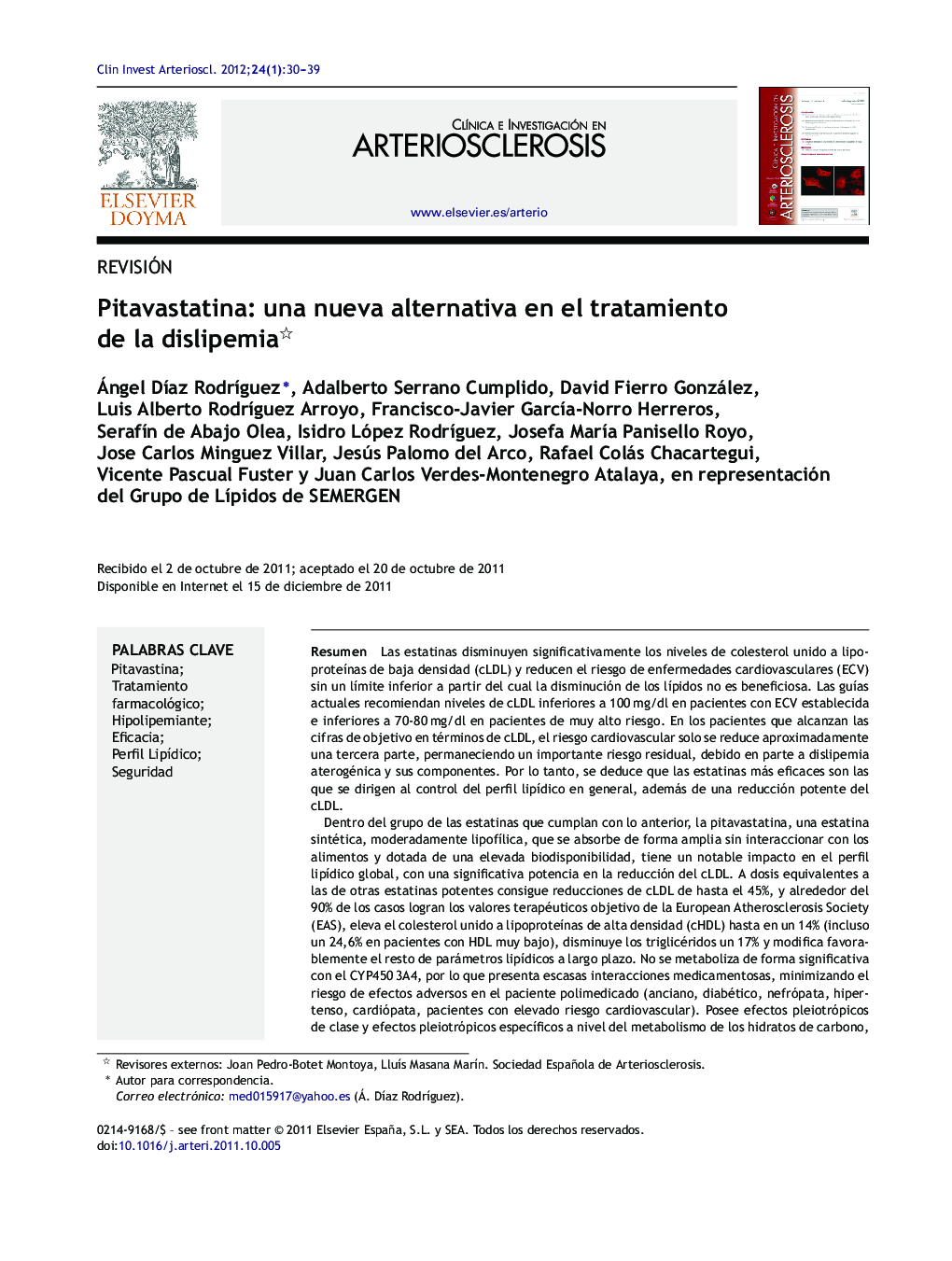| Article ID | Journal | Published Year | Pages | File Type |
|---|---|---|---|---|
| 2839668 | Clínica e Investigación en Arteriosclerosis | 2012 | 10 Pages |
Abstract
Pitavastatin belongs to the statin group that fulfils the above-mentioned requirements. Pitavastatin is a synthetic statin, moderately lipophilic with a good oral absorption and low risk of drug-food interaction and a high biodisponibility. It produces an important change in the overall lipid profile with a significant reduction in LDLc levels. Pitavastatin, at equivalent doses to other strong statins, gets decreases in LDLc up to 45%, about 90% of patients treated with pitavastatin reach the EAS treatment target, it increases HDLc up to 14% (even to 24,6% in patients with a very high level of HDLc), decreases TG by 17% and positively changes the rest of other lipid parameters, in the long term. Pitavastatin is not metabolized in significant by CYP450 3A4, therefore it has a low drug-drug interaction profile, especially in the polymedicated patients (elderly, diabetic, nephropathic, hypertensive, heart disease and patients with a high risk cardiovascular). Also, pitavastatin has statins class pleiotropic effects and specific ones effects about carbohydrate metabolism, glomerular filtration, adiponectin⦠beyond lipid lowering, which can be added to the reduction of residual risk. Pitavastatin is well tolerated, not toxicity and safety data are supported by a significant number of patients currently treated.
Keywords
Related Topics
Life Sciences
Biochemistry, Genetics and Molecular Biology
Physiology
Authors
Ángel DÃaz RodrÃguez, Adalberto Serrano Cumplido, David Fierro González, Luis Alberto RodrÃguez Arroyo, Francisco-Javier GarcÃa-Norro Herreros, SerafÃn de Abajo Olea, Isidro López RodrÃguez, Josefa MarÃa Panisello Royo,
